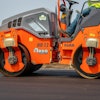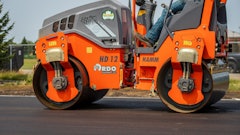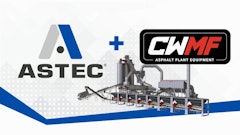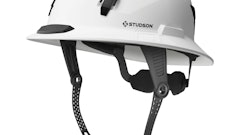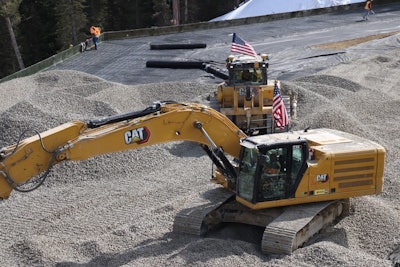
The collapse of a section of Wyoming’s Teton Pass highway in June 2024 disrupted a vital commuter and freight corridor linking Idaho’s Teton Valley to Jackson Hole. This threatened local economies and tested the limits of rapid-response engineering. Out of that challenge came a pioneering application of foamed glass aggregate, a product manufactured by AeroAggregates, that could impact how contractors and agencies approach future roadway failures.
But it’s important to consider the whole story of this road, because, like many of its kind, it has a story all its own. It was first cut by settlers more than a century ago, then fractured by geology and water, and now rebuilt through collaboration, risk-taking, and new material science.
A Road Forged by History
The Teton Pass has long been a critical artery for movement through the northern Rockies. Native trails and trapper routes dating back to 1811 first carved the way into Jackson Hole. By 1901, Uinta County taxpayers had funded the first formal wagon road, a rough cut of switchbacks and narrow grades. A graveled highway followed in 1913 and, by 1918, the modern automobile era demanded further engineering refinements. 1
Through the 1920s and 1930s, crews widened the road, reduced grades, and applied oil surfacing to improve durability. The current alignment of Wyoming State Highway 22 was completed in 1969, providing a safer, more direct route over the pass. Yet the terrain never fully yielded.
As Bob Hammond of WYDOT said in an interview with Engineering News-Record (ENR.com), “About every 10 to 15 years we have a landslide that blocks the road… when the winter snow melts, the ground gets saturated, and something will let loose somewhere.” 5
That cycle set the stage for 2024.
The 2024 Collapse
On June 6, 2024, WYDOT crews discovered a growing crack near milepost 12.8. The ground moved, dropping nearly six inches per hour. On June 8, the slope gave way entirely. Pavement, fill, and decades of patchwork slumped downslope in what locals quickly labeled the “Big Fill Slide.”
Fortunately, no vehicles were caught in the collapse, but the economic and transportation disruptions were immediate. Detours stretched more than 60 miles, severing daily commuter flows and regional freight. Governor Mark Gordon declared an emergency as WYDOT rushed to identify solutions that would last decades, not just the quickest possible fix.
Aero Aggregates: Glass, Fire, and Foam
To stabilize a mountain prone to saturation and shear, engineers needed a material that was both strong and extraordinarily light. That’s where Aero Aggregates came in. The Pennsylvania-based manufacturer produces ultra-lightweight foamed glass aggregate (UL-FGA) from 100 percent recycled curbside glass.
As CEO Archie Filshill explained, “Traditional aggregates weigh between 100 to 120pcf (pounds per cubic foot). Foamed glass aggregates are at 15pcf. And in the U.S., even traditional lightweight aggregates, like expanded shale, range between 55 to 60 pcf. So the industry feels safe using our ultra-lightweight foamed glass aggregate, because compared to any other type of fill, we’re the lightest—with one exception, Styrofoam.”
Filshill was quick to note why his product avoids the pitfalls of that alternative. “The beauty with foamed glass aggregate is that it’s made from glass. Acids, oils, greases, gasolines—the nastiest chemicals—you store in glass jars because glass isn’t affected by it. You could put foam glass in a tub of gasoline, ignite it, and after the gasoline burns off, the foam glass is still sitting there totally unharmed.”
Beyond chemical resilience, UL-FGA provides open-graded drainage, reducing pore pressure that can trigger slides.
“In Teton, one of the causes that contributed to the failure was that the embankment got saturated,” Filshill said. “Now they come back not just with ultra-lightweight, but ultra-lightweight that still drains. “That is a winning combination.”
Rebuilding the Pass: Risk and Reward
Choosing a Material Under Pressure
Once Ames Construction had the job, it was the definition of hitting the ground running. Pete Schexnayder, project manager for Ames Construction, recalled the rapid start.
“Let’s start at pre-con, right? This was fast. We worked over the Fourth of July, got a proposal together, and we were chosen right after. Within a week we were up in Cheyenne working with WYDOT’s team.”
Initial designs called for cellular concrete. But, as Schexnayder explained, “As you’re going up 100 feet and if you’re trying to do this with concrete, all that concrete has serious mass. How do I get that much cement up a fourteen percent grade with tourists everywhere? There was no laydown area for silos, batch plants—nothing.” That reality narrowed options.
He continued. “We vetted four to five solutions, and one of them was AeroAggregates. They had the highest risk. They’d never done a job like this before, we’d never worked with the material, and the plant was 2,000 miles away. But in the end, the other ones didn’t cut the mustard.”
Crews mobilized in August 2024. “We moved 65,000 yards,” Schexnayder said. “As we were digging benches, we’d hit pockets, and water would just gush out. That water was about halfway to three-quarters up, because of all the clay layers, and it just built up behind it and found the weakness.”
Stability required more than just lightweight fill. The team installed micropiles, soil nails, and underdrains.
We put about 6 to 8 foot of clean rock for drainage below the embankment layers, and we drilled five under drains back into the existing slope,” he explained. “On all three sides we put a three-foot clean rock drain with fabric. So as we came up with AeroAggregates, we had drainage every step of the way.”
Logistics of Lightweight
If foamed glass solved geotechnical problems, it introduced logistical ones. The aggregate was manufactured in Pennsylvania, shipped by rail to Salt Lake City, trucked to Idaho, stockpiled, then hauled up the pass. It was a complicated series of maneuvers that had to be figured out on the fly, and both the construction crews and the manufacturers were all-hands-on-deck to solve problems as they arose.
“We found a place in Idaho, on side of the road, and turned it into our stockpile area. We could only hold about 8,000 cubic yards—it’s a mountain road,” Schexnayder said. “By the time it reached us, we’d touched it seven times, and the more you handle it, the more it breaks down.”
Additionally, moisture added to the challenge. “They produce a quality product, but it is stored outside. So, it gets saturated, goes through freeze-thaw, it can collect into big chunks. Your unit weight can [increase] up to 29 pounds per cubic foot. That means more trains, more containers, more trucks, and more touches.”
Despite setbacks, the collaboration between Ames Construction and AeroAggregates was genuine, and a huge factor in the overall success of the project.
“It was a team effort, and everybody participated. This includes AeroAggregates. They were very involved, but they were learning as well, and we were too. It’s all learning,” Schexnayder emphasized.
Boots on the Ground
If contractors had to adjust, so did Aero’s leadership, and they were ready to get as hands on as they could.
“Archie [Filshill] was always there,” Schexnayder said. “We had geogrid delivered from Georgia. Rolls were 200 pounds, crammed into the trailer. Archie jumps in with us and starts hauling this stuff out. I’m like, aren’t you the president or CEO of this company? But he got his feet dirty. He liked it. That meant a lot to my guys.”
In the end, the system worked.
“It met the thresholds,” Schexnayder confirmed. “The beauty is it goes in fast. We could finish a two-foot lift in almost a day and a half, baskets, geogrid, fabric, everything.”
He offered some practical advice to others in the industry with a big fill need for strength, while maintaining light weight status and filtration:
“Understand the product. Not just the properties—the designers will do that. Where’s it stored? How long has it been there? Don’t just take the pamphlet numbers, investigate the whole process. But, either way, I’d use the same product again. I really would.”
A New Tool for Resilient Infrastructure
The Teton Pass has been a proving ground for the intersection of geology, climate, and engineering since the early 1900s, and the 2025 rebuild was no exception.
Aero Aggregates’ foamed glass aggregate isn’t the tool for every job, but as Filshill noted, it is, “a new tool in the toolbox,” for contractors confronting soft soils, slope instability, and drainage challenges.
Schexnayder agreed, even though the learning curve was almost as steep as the Pass itself. The rebuilt road now represents more than a functional highway, as it’s also a test case for ultra-lightweight sustainable materials in American infrastructure.
And for residents of Jackson Hole and Teton Valley, the rebuilt highway is more than an engineering case study. It is a lifeline restored, rebuilt to last another 75 years, forged through collaboration, and carried on the backs of recycled glass.


